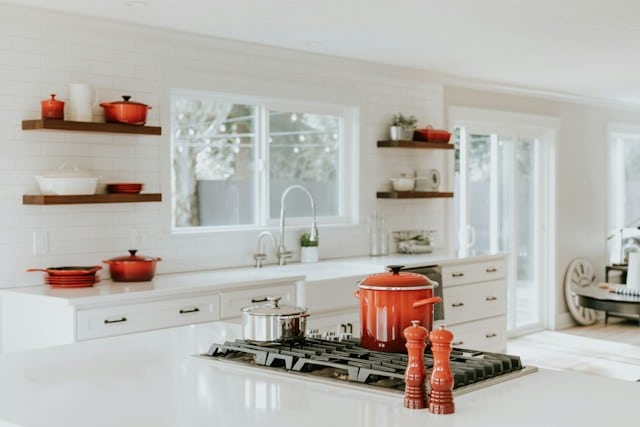What’s the Best Way to Use Smart Window Tints for Privacy and Energy Conservation in a Home Office?

In your pursuit of creating an ideal home office setup, you have probably encountered a diverse range of factors to consider – ergonomic furniture, appropriate lighting, and sound insulation are just a few. However, one element that often goes overlooked is the window treatment. More specifically, the potential of smart window tints. Not only do they offer privacy and light control, but they can also contribute to energy conservation. Let’s delve into the details.
The Power of Smart Window Tints
Smart window tints, also known as switchable or smart glass, offer a modern solution to traditional window treatments. Utilizing the power of technology, these innovative films can change from opaque to transparent at the flick of a switch. This unique feature provides a host of benefits, particularly for those utilizing them in a home office setting.
Lire également : What Are the Best Privacy Plant Options for an Urban Terrace Overlooking Neighbors?
For starters, smart window tints give you complete control over your privacy. If you’ve ever been on an important video call and found yourself distracted by the pedestrians peering into your workspace, you will understand the value of an instant privacy solution. With the simple press of a button, your window goes from clear to tinted, shielding your office from prying eyes.
Energy Conservation with Smart Tints
Beyond privacy, smart window tints also contribute significantly to energy conservation, making them a beneficial solution for your home office. They work by controlling the transmission of solar heat energy into your workspace.
A lire également : What Are the Latest Innovations in Insulation for a Renovated Vintage Airstream Office?
Most smart window tints will block up to 99% of harmful ultraviolet (UV) rays, effectively reducing heat accumulation in your office. This energy-conserving measure can drastically decrease the need for air conditioning, thus lowering your energy bills. Also, by blocking UV rays, these films protect your office equipment and furniture from sun-induced fading and degradation.
Smart window tints also manage light transmission effectively. They can be adjusted to allow varying levels of light into your space, meaning you can control the natural lighting in your office without the need for artificial lights or bulky curtains. This significantly reduces the consumption of electric energy, further contributing to conservation efforts.
Residential vs. Commercial Tinting: What’s the difference?
Residential and commercial tinting serve similar purposes but are often made with different materials to accommodate the distinct needs of home and business users. Both types, however, are effective in providing privacy and reducing energy consumption.
Residential window tints are designed with the home environment in mind. They are typically less reflective and have a neutral appearance, blending seamlessly into home decor. These tints are great for reducing glare on computer screens, providing a comfortable working environment.
Commercial window tints, on the other hand, are more reflective and darker. They are designed to block more light, making them ideal for larger commercial spaces with vast window areas exposed to sunlight. Despite the differences, either option can work well in a home office setting, depending on your specific needs and preferences.
Security Benefits of Smart Window Tinting
While privacy and energy conservation are key benefits of smart window tinting, it’s also worth noting their contribution to home security. These films not only give a sense of privacy but also provide an added layer of security for your home office.
Contrary to popular belief, the primary function of security films is not to prevent glass from breaking. Instead, they are designed to hold the glass together when shattered, limiting potential injuries from flying shards. Additionally, they make it harder for burglars to break into your home through the windows, acting as a deterrent to potential intruders.
In the context of a home office, security films can protect your valuable equipment from theft or damage in the event of a break-in. Given that many of us store sensitive and valuable information in our home offices, this added layer of security can offer great peace of mind.
So, as you design your perfect home office, consider the multifaceted benefits of smart window tints. They offer an effective solution to privacy, light control, energy conservation, and security. Just remember, every home office is unique, and it’s important to find a solution that best fits your personal needs and preferences.
Exploring Different Types of Smart Window Tints
As the demand for smart glass and smart film continues to rise, various types of smart window tints have been developed to cater to diverse needs and preferences. Here, we will explore some of the most popular ones.
Electrochromic window tints are one of the most common types. They work by applying a voltage that causes the window to darken or lighten. This type of smart window tint is energy efficient as it maintains its chosen state without constant electricity supply.
Next, there’s thermochromic window tinting. These tints respond to heat and automatically darken as the temperature rises, aiding in controlling heat gain and reducing the use of air conditioning.
Lastly, photochromic window tints react to sunlight. The brighter the sun, the darker the tint becomes. This can be particularly beneficial in a home office setting, where controlling the amount of natural light can reduce glare on computer screens and minimize the need for artificial lighting.
When choosing a smart window tint, it’s essential to consider your specific needs. For example, if you live in a region with high temperatures, a thermochromic window tint might be the best option. If you are primarily concerned with privacy, an electrochromic tint could be more suitable. Many companies offer a sample kit for you to experiment with different tints before making a decision.
Smart Window Tints: A Wise Investment
When it comes to outfitting your home office, smart window tints can be a worthwhile investment. These high-tech window treatments address several common office concerns simultaneously, from privacy to energy conservation, and even security.
Not only do smart window tints give you on-demand privacy, but they also offer substantial energy savings by regulating solar heat and light transmission. This results in a comfortable working environment and lower energy bills.
Moreover, these tints provide an added layer of security for your home office. They discourage intruders and protect your office equipment from potential theft or damage. Even in the event of a window breakage, security films hold the glass together, preventing injuries from flying glass shards.
It’s worth noting that while smart window tints may have a higher initial cost compared to traditional window treatments, the benefits they offer make them an economical choice in the long run. Be sure to request an info order or kit quote from potential suppliers to get a clear picture of the costs involved.
Conclusion
In the quest to create the ideal home office, smart window tints emerge as a multi-functional solution. They provide adjustable privacy, reduce energy consumption, and add a security level – all with the convenience of modern technology. Whether you opt for electrochromic, thermochromic, or photochromic window film, ensure you choose a solution that best fits your specific needs and preferences. Remember, the perfect home office is not just about aesthetics; it’s also about functionality and comfort. And with smart window tints, you can achieve all three.
